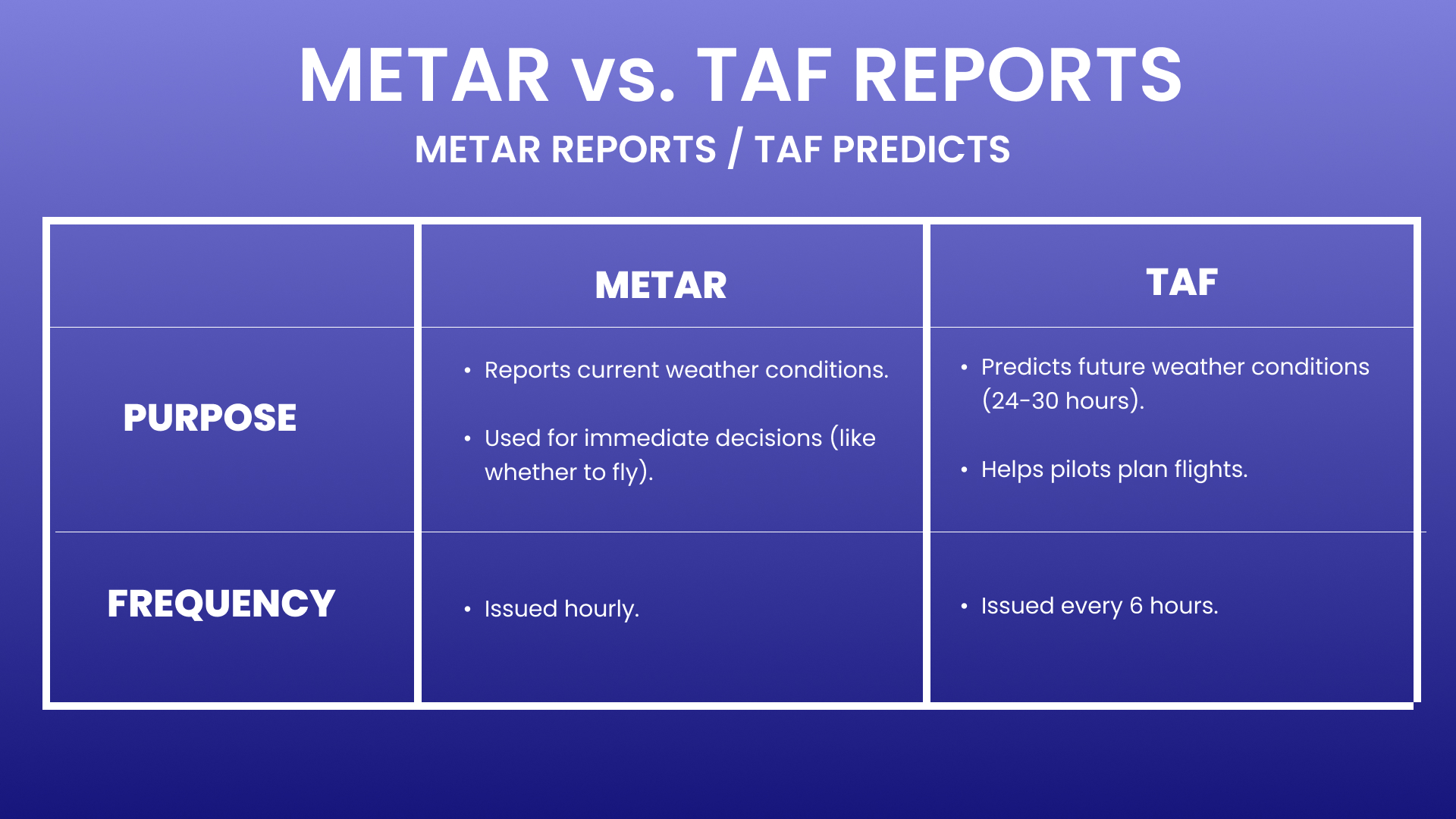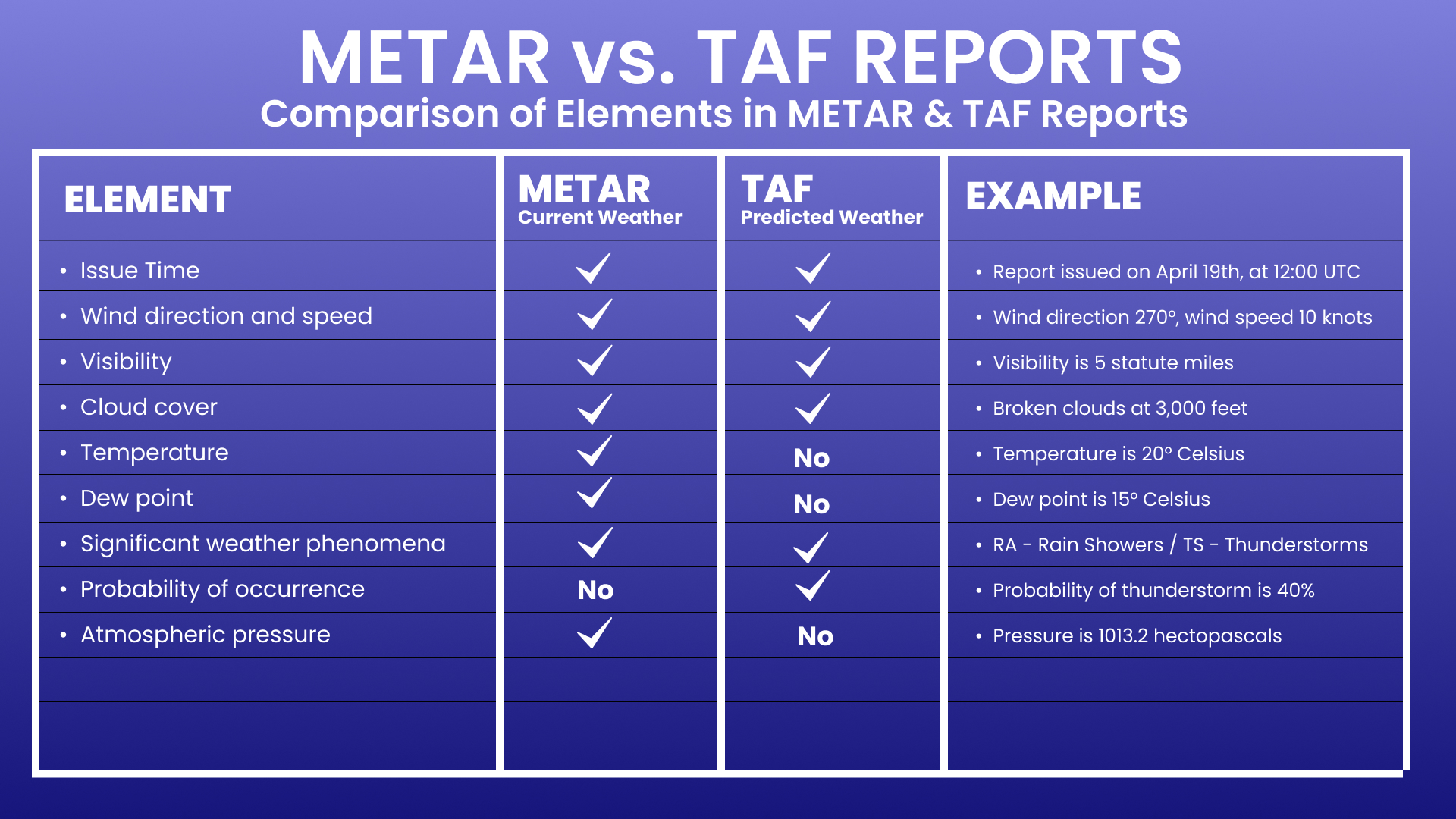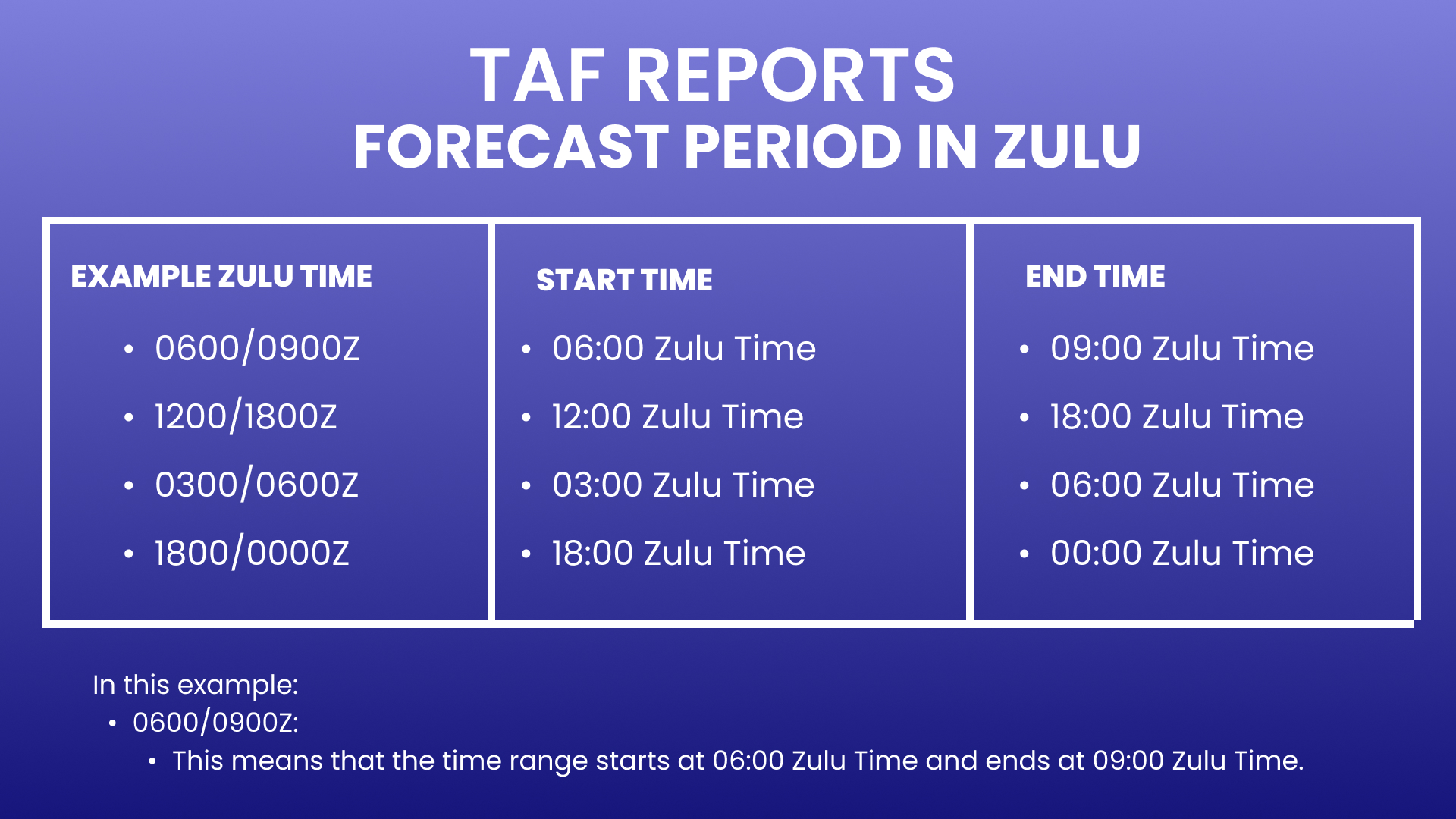Defining METAR & TAF Reports
Both METAR and TAF reports provide essential information about weather conditions at airports. Each type of report serves a different need in flight operations.
METAR Reports: Real-Time Weather for Immediate Decisions
METAR reports offer real-time, current weather updates, allowing for immediate assessment and decision-making during flight operations. METAR reports are usually issued hourly or more often during fast-changing weather.
TAF Reports: Weather Forecast Predictions for Flight Planning
In contrast, TAF forecasts provide pilots with detailed weather predictions for the next 24 to 30 hours, aiding in strategic flight planning. TAF forecasts are updated every 6 hours.
While TAF reports are useful for flight planning ahead of time, weather predictions may not always be precise, leading to potential deviations from the forecast. Updates every 6 hours may not capture rapid weather changes, necessitating real-time adjustments based on METAR reports. Use METAR reports for real-time weather updates.

Elements of METAR & TAF Reports
METAR and TAF reports cover nearly the same elements, with just a few differences. Both reports include essential weather parameters such as wind direction and speed, visibility, cloud cover, temperature, and dew point.

Reading Time in METAR & TAF Reports
Issue Date and Time on METAR and TAF reports
The Issue Date & Time
In both METAR and TAF reports, the issue time indicates when the report was generated and is presented in Zulu Time (UTC)
Structure:
The date and time are structured in a specific order. First, the 2-digit day of the month is listed, followed by the Zulu time in a four-digit format (e.g., “121200” would represent the 12th day of the month at 12:00 Zulu time).
Why METAR and TAF Reports Use Zulu Time
To understand METAR and TAF reports, it’s important to note that both are written in Zulu Time (Z Time or UTC). Zulu Time is used because it’s a universal standard that avoids confusion between different time zones around the world.
By using Zulu Time, pilots and air traffic controllers can rely on a consistent, unambiguous time reference when interpreting weather reports, regardless of their location.
For example, a TAF report might indicate that a thunderstorm is expected to start at 1500Z and end at 1800Z.

Forecast Period – On TAF Reports Only
Given the nature of TAF reports being forecast periods, it’s important to understand how to read the specific forecast time range for accurate planning. The forecast period indicates the time window for which the weather forecast is valid.
Structure:
The forecast period on a TAF starts with the 2-digit day of the month, followed by the Zulu time (UTC) for the start of the forecast. This is followed by the 2-digit day of the month and Zulu time for the end of the forecast period. These two indicators are separated by a slash.
For example, a TAF might look like this:
1218/1318, meaning:
- 12: The 12th day of the month
- 18: 1800 Zulu time (18:00 UTC)
- 13: The 13th day of the month
- 18: 1800 Zulu Time (18:00 UTC)
So, this forecast period is for 24 hours starting at 1800 Zulu time on the 12th and ending at 1800 Zulu time on the 13th.

Preview of Zulu time on METAR & TAF REPORTS
To help visualize how Zulu time is used in a TAF report, here’s an example that shows the structure of an actual TAF report, showing when it was issued and the forecast time ranges and benchmarks:
is there supposed to be an explanation with this?
TAF Report

Quick Review
Flash Cards
Zulu (UTC) Time Practice: Hover over each flash card to view the explanation of the day and time. Note that METAR times identify the day, hour and minutes, while TAF times include only the day and hour.
METAR issue time:
110200Z
02:00 UTC on the 11th day of the month
151830Z
18:30 UTC on the 15th day of the month
040745Z
07:45 UTC on the 4th day of the month
TAF Forecast Period:
1218/1324Z
Forecast Period:
1800Z on the 12th day to 2400Z on the 13th day.



